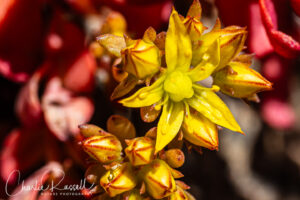
Saddlebag Lake is in interesting high-Sierra area for an interesting wildflower hike. Our visit was in late September, and we were looking for late season wildflowers. We did find a nice selection, more than I expected!
Hiking at higher elevations brings you many benefits, but also some difficulties. This trail starts at a bit over 10,000′, which can be tough if you aren’t acclimated to the elevation. That was a limiting factor in our hike, since we live at about 50′ above sea level! On the other hand, you get to see some wildflowers that you won’t see at lower elevations, plus there are VERY few non-native plants at these sub-alpine heights.
The Flowers
Here’s a sample of a few of my favorites from this hike (click on the image to see a larger view).
The star of this hike was the Sierra gentian. What a gorgeous wildflower! This is why you hike in late August or September, as gentians are late summer bloomers. This was the the first time I’ve come across this particular species. We found a surprising number of them in several places around the lake, in wetter areas.
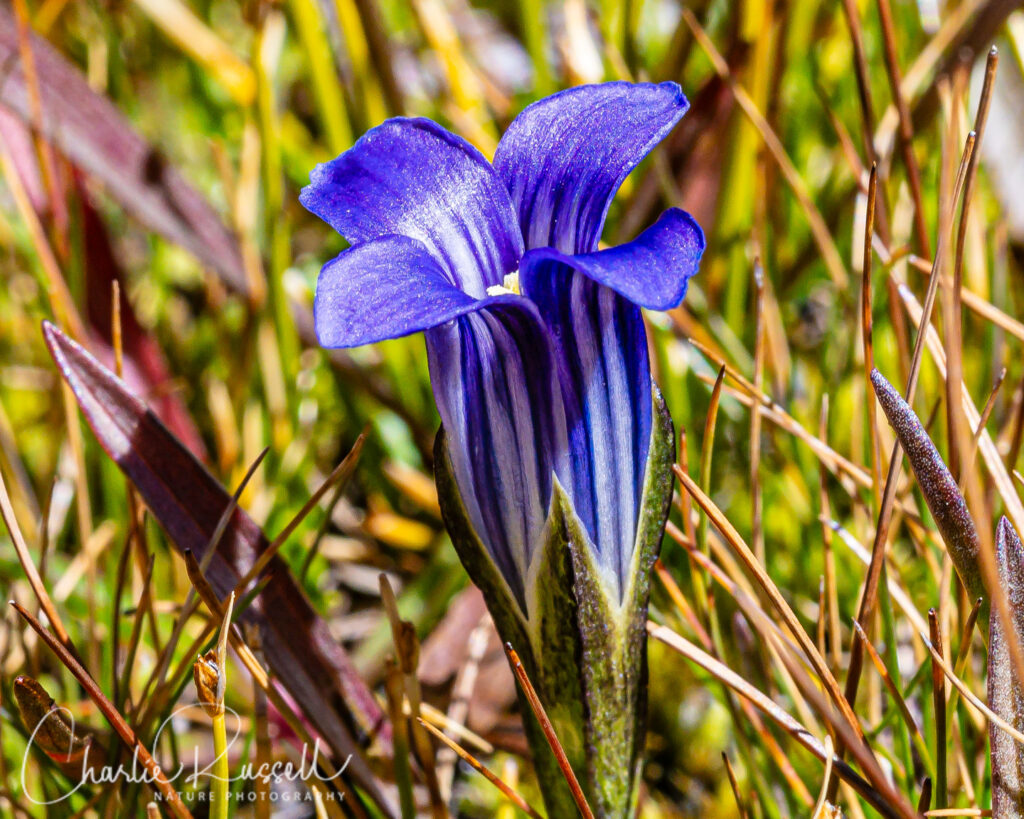
Another exciting find was a number of Sierra columbine. I didn’t expect these to still be here this late in the year. We found these tucked amongst the rocks on the west side of the lake. There were several color variations (photos in the gallery below). This species is known to hybridize with the red and yellow Crimson columbine. We didn’t find any crimson columbine on this visit, but there are iNaturalist observations for it in this immediate area, earlier in the year.

Mountain jewelflower is found in many places in California, at many different altitudes. It is a tough flower to photograph, they are small and on spindly stems that wave in the breeze. I’m intrigued by the intricate shapes of these tiny flowers, which many people miss.

We found a small stand of Western polemonium (aka Western sky pilot) in a seep area on the east side of the lake. There were quite a few interesting plants in these seeps (monkshood, Arnica) but unfortunately they were mostly pretty ragged, past prime. This one stood out, though.

For the best viewing experience, click on the lightbox image below, and you can scroll through larger versions of the photos of many of the plants (and other things) that we found on this hike. I am not posting photos of all the plants we found, because many of the plants were in pretty ragged shape due to it being late in the season. All photos here are available for purchase in a variety of formats.
(Insert gallery link here)
The Hike
For this visit we just took the lakeside trail, which loops all the way around. This was about a 4.5 mile hike, without a lot of elevation change. We went clockwise around the lake.
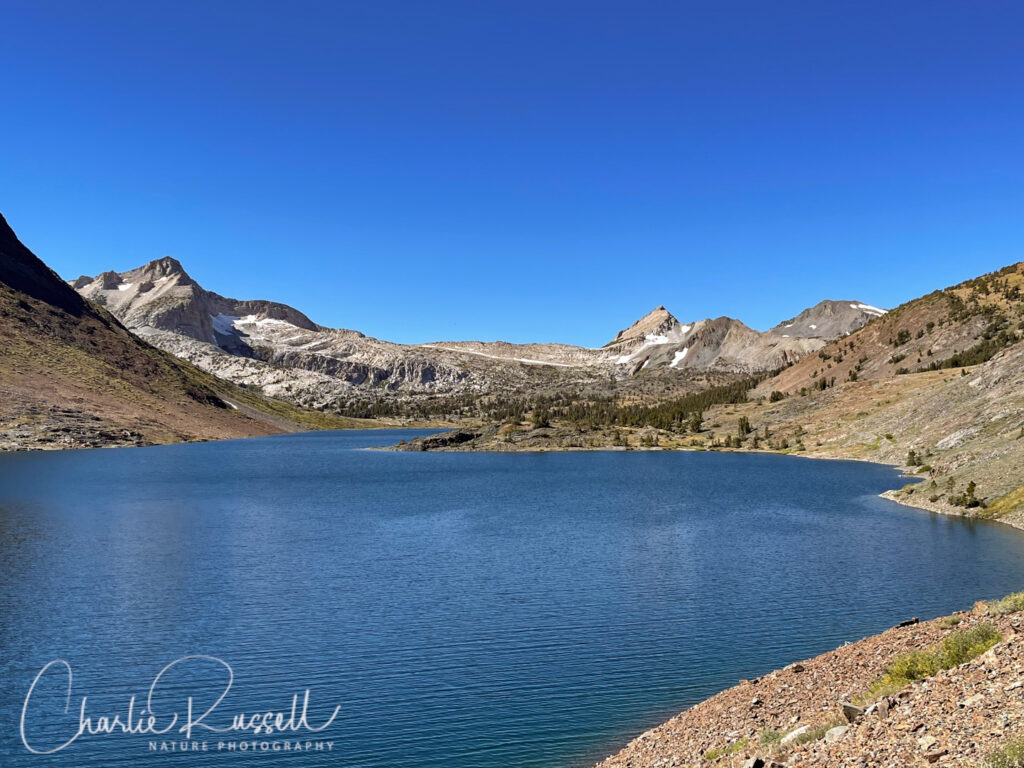
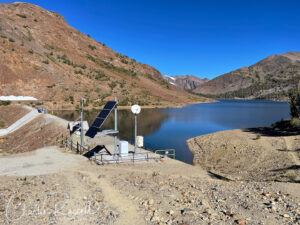
From the parking area you can see the dam. You can cross the dam to the other side, and catch the trail along the lake.
Otherwise you have to go down to the creek and bushwhack across, which may be difficult if there is a lot of water (or snow).
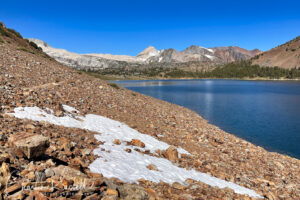
Most of the hike is very exposed, with very little shade. Although this looks very barren, there were a surprising number of plants tucked in amongst the rocks!
This portion of the trail wanders up and down the hillside a bit, and there still was a bit of snow in some patches.
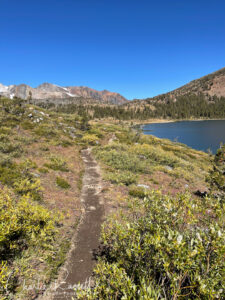
When you get closer to the northwest end there are some hillside seeps, and a surprising amount of low willows.
This is the area where we found the biggest volume of gentians, which got me very excited.
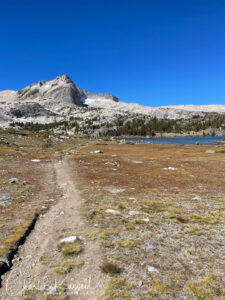
This opens up to a wide sub-alpine meadow, which earlier in the year had a nice display of paintbrush. Sadly, they were past peak by the time we hiked here.
You’ll see North Peak standing out above Greenstone lake, a smaller lake that feeds into Saddlebag.
It was easy to cross the meadow, but I think that earlier in the season this could be a bit muddy to traverse in spots.
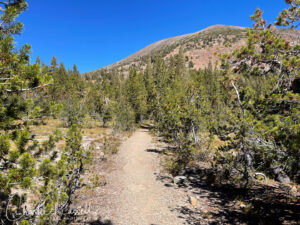
At the north end you find some cover with the lodgepole pines, which is a nice break from the exposed rocks.
There are multiple branches to the trail in this area, but you can just keep bearing right to go along the lake.
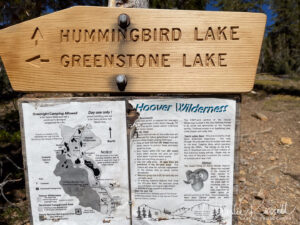
You will come to a trail junction with a sign pointing uphill to Hummingbird Lake. This is the entry to the Twenty Lakes Basin area (Hoover Wilderness), which we didn’t have the energy to try. I’m told that this is a beautiful area, with lots of wildflowers, but that would make this a 9 mile hike (or much more), with a lot of ups and downs, which we weren’t prepared to do.
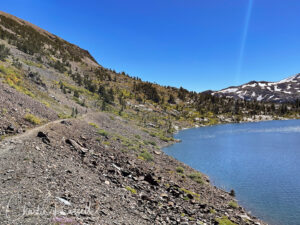
Continuing around the lake, the east side is again very rocky and exposed, with a few spots with trees.
There are a couple of hillside seeps / streams along the way, which contained a number of wildflowers that we hadn’t seen in other spots.
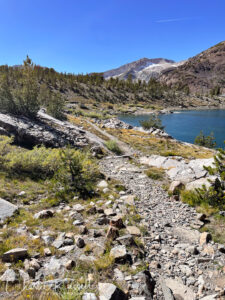
As you get near to the trail head, there are multiple paths through the broken rocks.
There are a number of interesting wildflowers scattered about. Stonecrop, more gentians, paintbrush.
Here’s the track that we followed:
Saddlebag Lake
Profile
Move your mouse along the elevation graph to show the location on the map. The Refresh icon will re-center the map. The Expand icon will expand to full screen.
Directions
Saddlebag Lake is a reservoir in the Eastern Sierras, off of Highway 120 between Mono Lake and Yosemite National Park. The turnoff is about 10 miles west of Lee Vining (junction of Hwy 120 and Hwy 395), or 10 miles east of Tuolumne Meadows. Take Saddlebag Lake Road heading northwest. This road alternates between gravel and pavement, it was not a very rough road if you don’t speed. You’ll go about 2.5 miles until you come to the Saddlebag campground area, where you can park.
Note that the vault toilet is at the very end of the road, by the regular campground. There is a toilet at the group campground site, but that often is locked.
You may find references online to a “water taxi” at Saddlebag Lake Resort, which can take you to the north end of the lake. This service might not be available – the service hasn’t been available every season, and their website isn’t always accessible. This is a way to shorten the hike if you want to go to the valleys on the far side of the lake. However, note that all of the flowers in my report are from the trail around the lake, so we would have missed them if we took the water taxi!
Places to Stay and Eat
If you aren’t camping, the nearest town is Lee Vining. If you stay there you get the added benefit of being able to visit the Mono Lake Tufa State Natural Reserve.
For this visit we stayed at Murphey’s Motel. This is an older building but the room was VERY clean and in good shape. Very satisfactory.
For dinner, we ate at the famous Whoa Nellie Deli. You really have to try this spot, it will surprise you! It looks like a fast food counter inside a gas station gift shop. Well, almost. In spite of the setting, the food is fabulous. Keep in mind that in the busy season, there can be quite a crowd. I’ll also note that the gas prices here were about a dollar cheaper than at gas stations in the middle of town.
For breakfast we ate at the Latte Da Coffee, which is attached to the El Mono Motel. It is a wonderful place for breakfast, with a nice variety of pastries. I’m not sure that these were all fresh-baked that morning, but they were yummy. We had a blueberry muffin and a cherry coffeecake. Well worth a visit. If the weather is nice you can eat your breakfast in their flower garden. And, as a bonus, this is where we bought sandwiches for lunch. It is SO very nice to find a place that will make you a fresh sandwich early in the morning before your hike. My wife had a “vegan green swallow” – house baked focaccia with pesto, hummus, veggies, avocado. She loved it. I had a “Hammonds”, with egg, ham, cheddar and jack cheese, on that same wonderful focaccia. Real ham, not pre sliced store grocery store packaged ham. Absolutely wonderful.
Timing is Everything
This visit was in the last few days of September 2023. It has been an odd year for timing, with all the cold weather we had in the spring. I’m not sure that we would normally find this many flowers in bloom this late. I will note that reports from people who came a few weeks earlier indicated that they found quite a few more flowers, particularly paintbrush.
Temperatures were in the low 60’s, maybe a bit cooler at the start, which made it quite comfortable for a hike. There isn’t a lot of shade on most of the hike, so hotter weather could be uncomfortable.
Since the elevation is about 10,000′, you might not see many plants of interest until the very end of June. It will depend on the snow regime. I’ll note that even in September there was snow along some spots on the trail! I’m guessing that July through August would be the best for the most variety, but note that the Gentian’s won’t be showing up until late August through September, usually.
Saddlebag Lake Wildflowers
Here’s a listing of the native plants that we found on this visit. One of the nice things about visiting alpine and sub-alpine habitats is that you rarely find non-native plants! We didn’t find any on this visit.
The ones listed in color are endemic to California (that is, found only in the California Floristic Province). In most cases the scientific name will be a link to a reference source such as Calflora.
- Alpine flames, Pyrrocoma apargioides
- American bistort, Bistorta bistortoides
- Arrowleaf ragwort, Senecio triangularis
- Aulacomnium sp. (moss)
- Autumn dwarf gentian, Gentianella amarella ssp. acuta
- Brewer’s paintbrush, Castilleja applegatei ssp. pallida aka Castilleja applegatei var. breweri
- Clasping arnica, Arnica lanceolata ssp. prima
- Clokey’s fleabane, Erigeron clokeyi var. pinzliae
- Columbian monkshood, Aconitum columbianum ssp. columbianum
- Dinnerplate thistle, Cirsium scariosum var. americanum
- Haircap Moss, Polytrichum sp.
- Leichtlin’s mariposa lily, Calochortus leichtlinii
- Little elephant’s head, Pedicularis attollens
- Lobb’s dwarf lupine, Lupinus lepidus var. lobbii
- Lodgepole pine, Pinus contorta ssp. murrayana
- Mountain coyote mint, Monardella odoratissima ssp. glauca
- Mountain jewelflower, Streptanthus tortuosus
- Naked buckwheat, Eriogonum nudum
- Northern goldenrod, Solidago multiradiata
- Pacific hulsea, Hulsea algida
- Peirson’s paintbrush, Castilleja peirsonii
- Purple mountainheath, Phyllodoce breweri
- Ranger’s buttons, Angelica capitellata
- Rosy pussytoes, Antennaria rosea
- Sanddune wallflower (western wallflower), Erysimum capitatum var. capitatum
- Shrubby cinquefoil, Dasiphora fruticosa
- Sierra columbine, Aquilegia pubescens. Possibly a hybrid with A. formosa
- Sierra gentian, Gentianopsis holopetala
- Sierra beardtongue, Penstemon heterodoxus var. heterodoxus
- Sierran woodbeauty, Drymocallis lactea var. lactea
- Slender cinquefoil (aka Nuttall’s cinquefoil), Potentilla gracilis var. fastigiata
- Spearleaf stonecrop, Sedum lanceolatum
- Swamp onion (Pacific onion), Allium validum
- Tawny horkelia, Horkelia fusca var. parviflora
- Tundra aster, Oreostemma alpigenum var. andersonii
- Wandering fleabane, Erigeron glacialis var. hirsutus
- Western polemonium (aka Western sky pilot), Polemonium occidentale
- Willow, Salix sp.
We also found the following:
- Bristle Flies, Family Tachinidae
- Chalcidoid Wasps, Superfamily Chalcidoidea
- Clodius Parnassian, Parnassius clodius
- Darker-spotted straw moth, Heliothis phloxiphaga (larva)
- Mormon Cricket, Anabrus simplex
- Soft-winged flower beetle, Listrus sp.
- Undulant-Winged Grasshopper, Circotettix undulatus
- Willow Apple Gall Sawfly, Euura californica (galls)


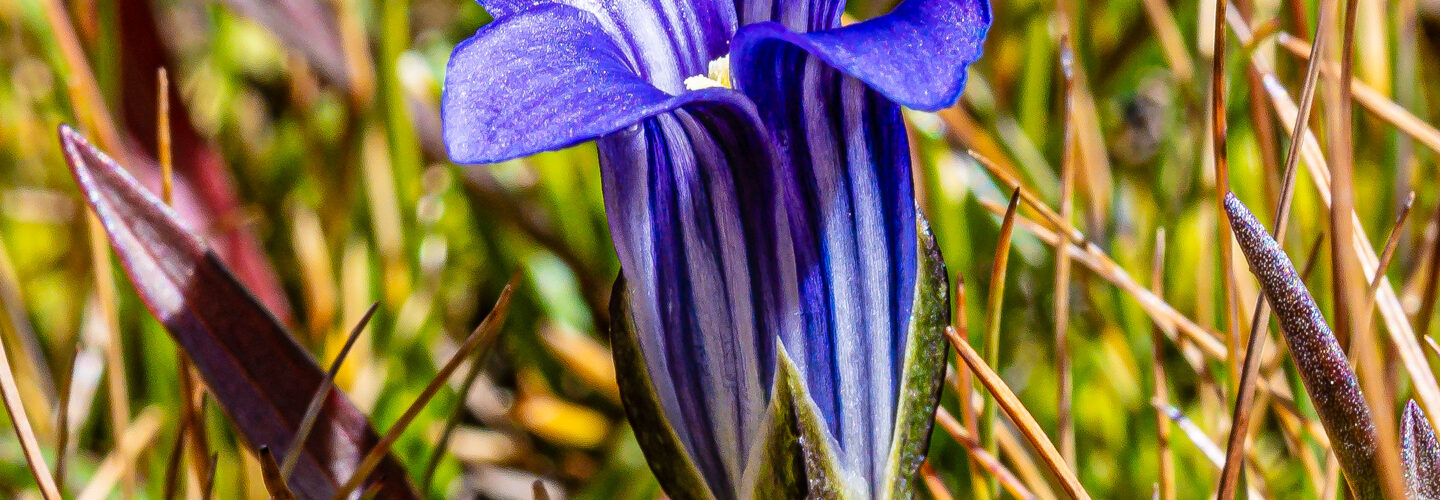
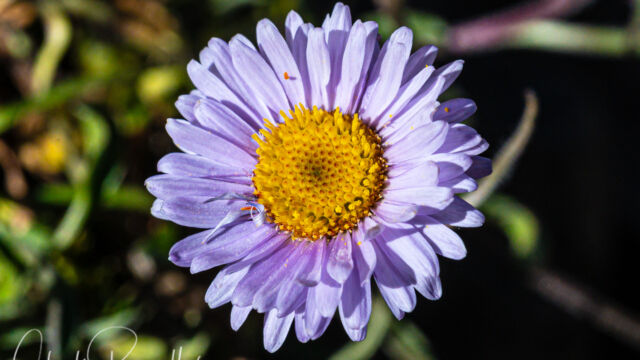

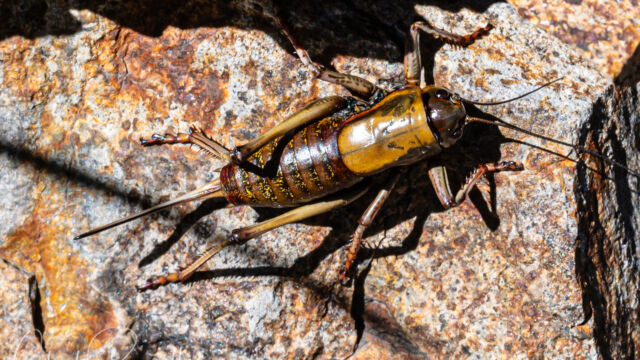
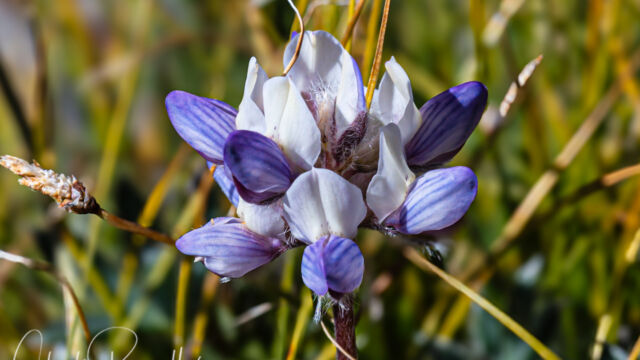
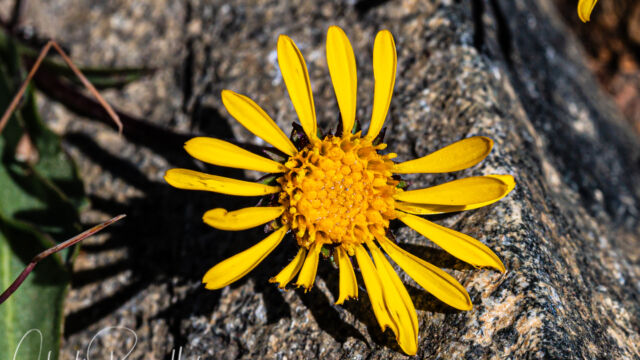

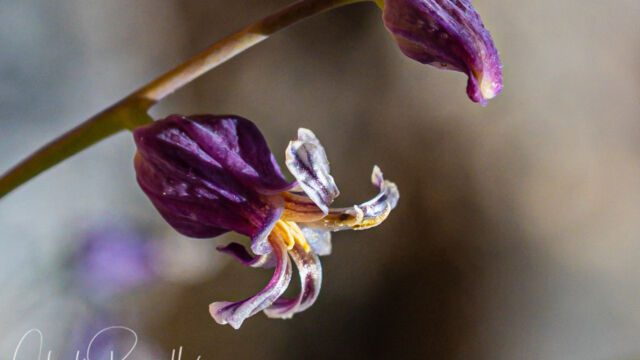
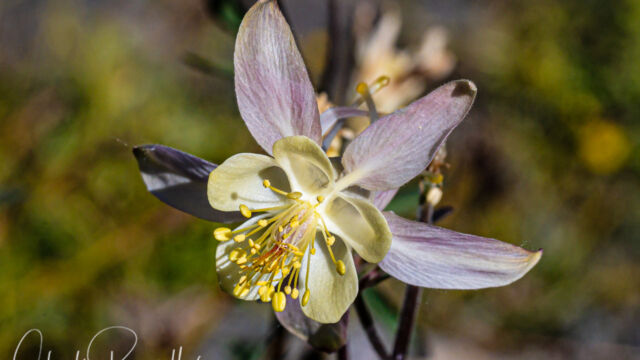
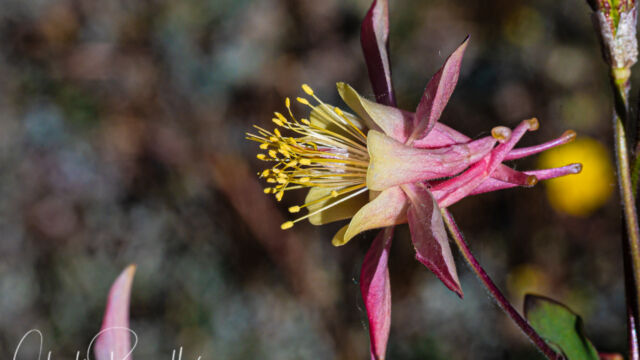
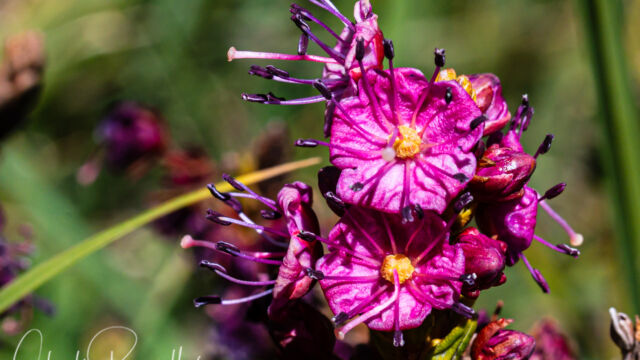
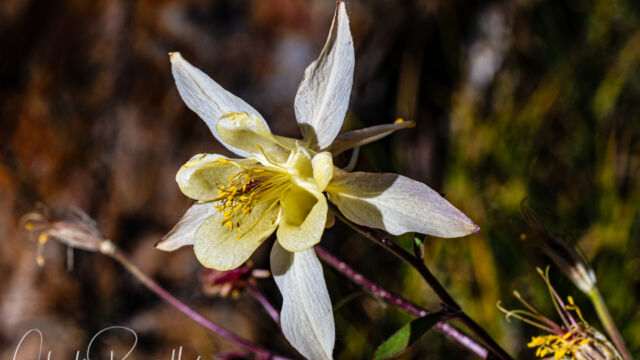
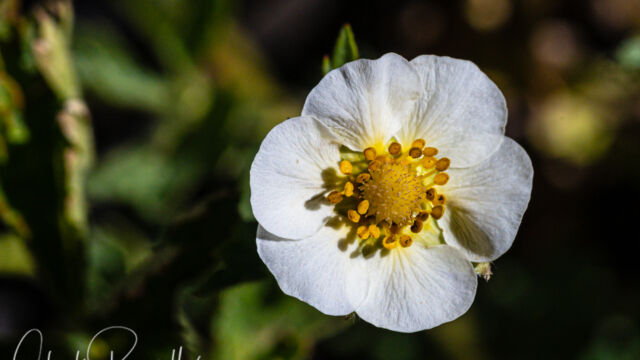
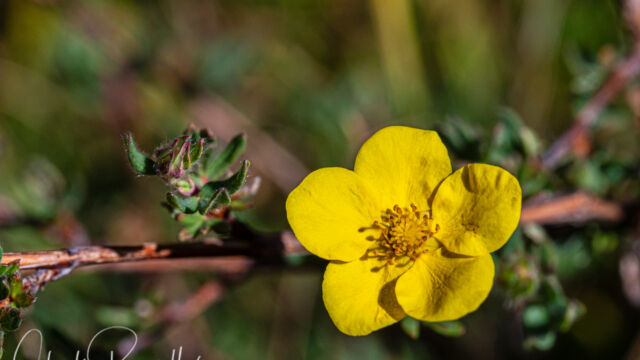
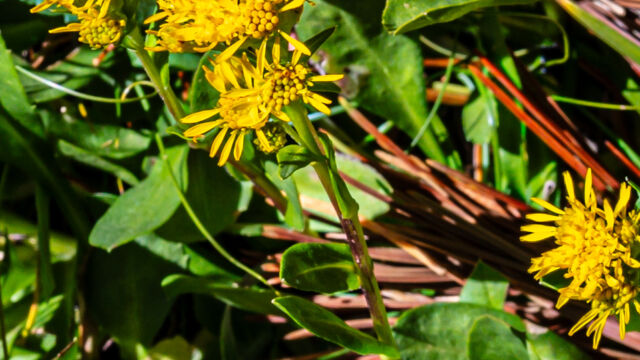
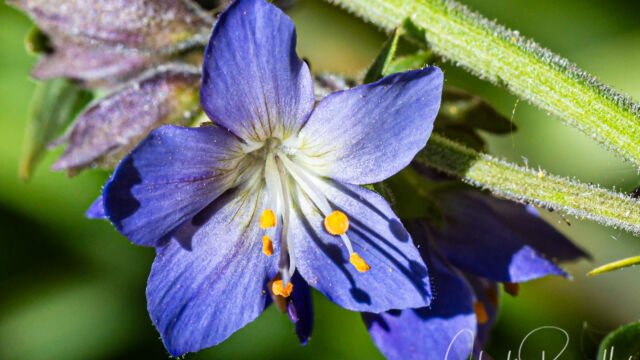

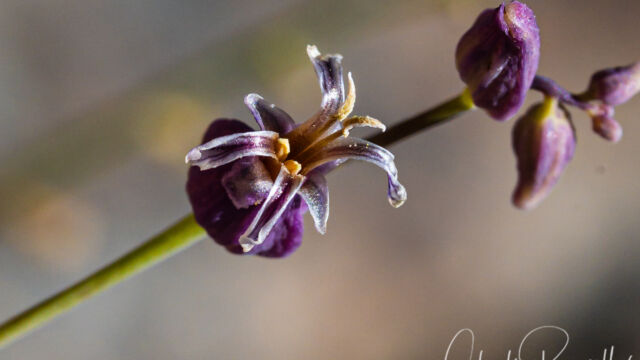
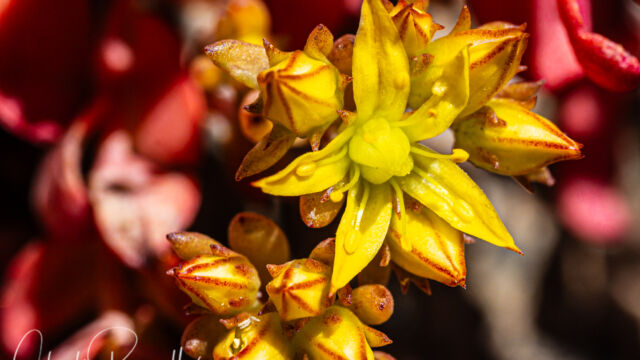
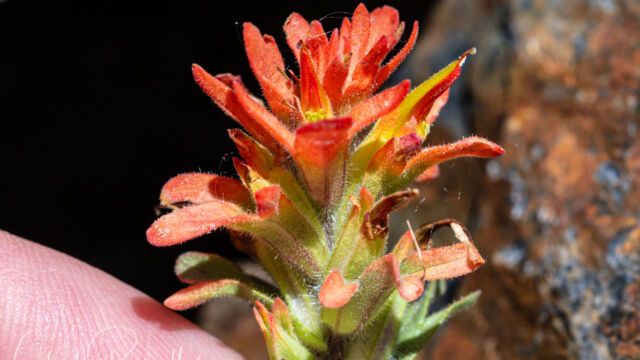
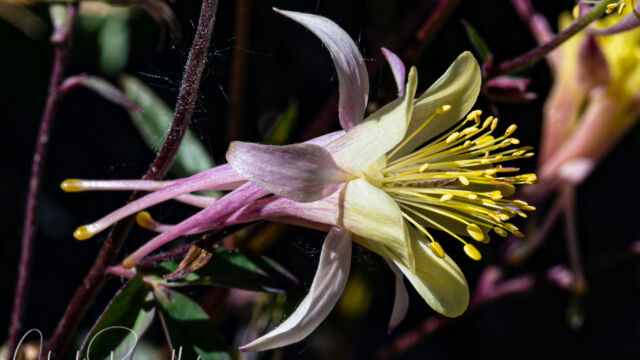
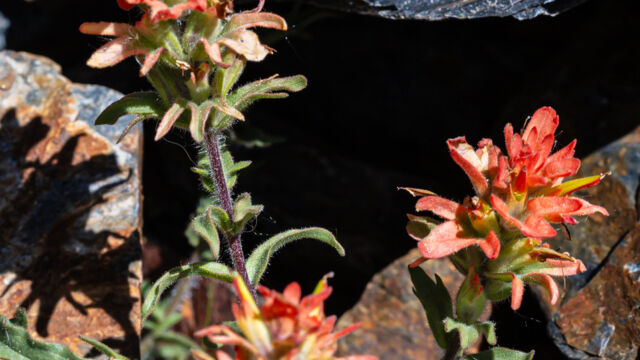
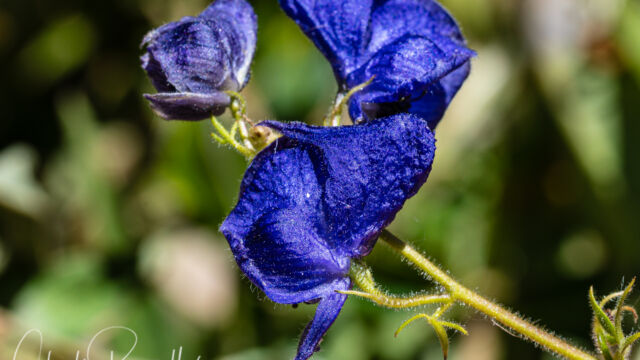

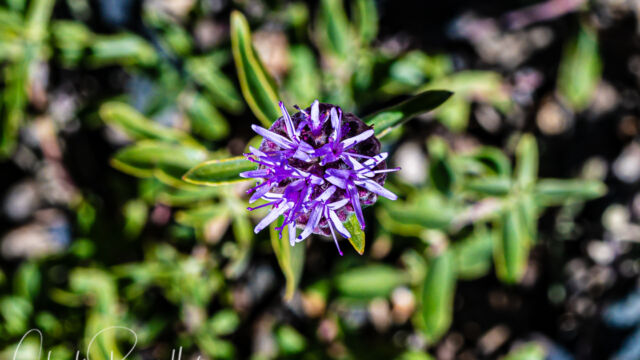
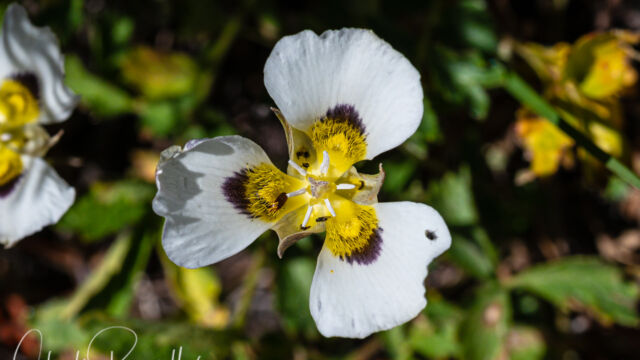

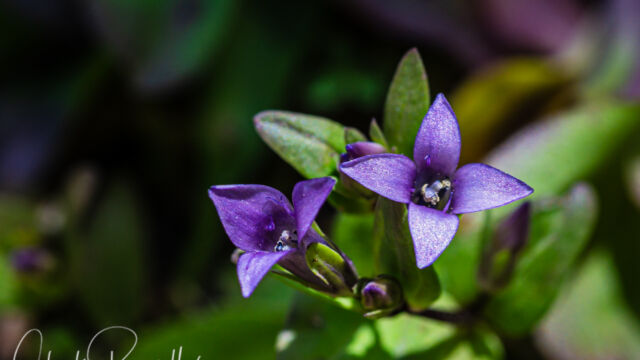
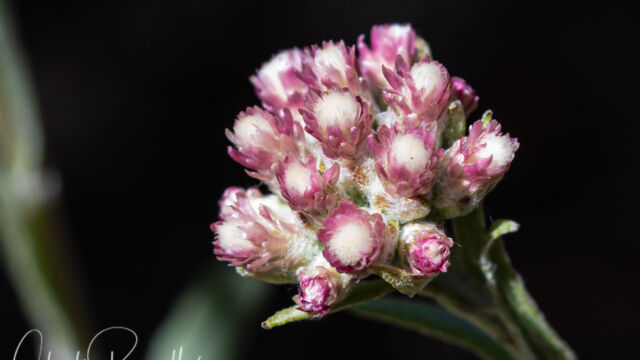
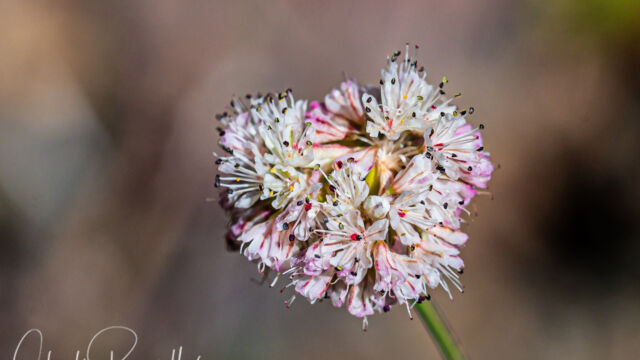
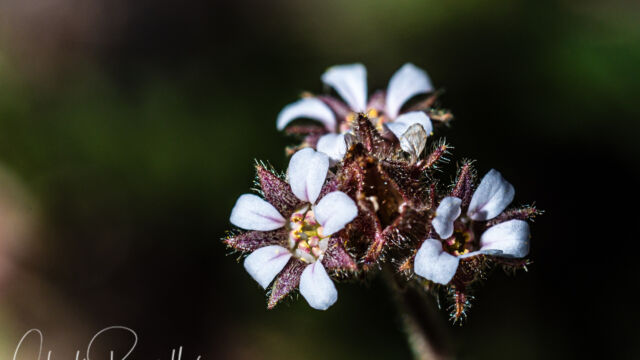
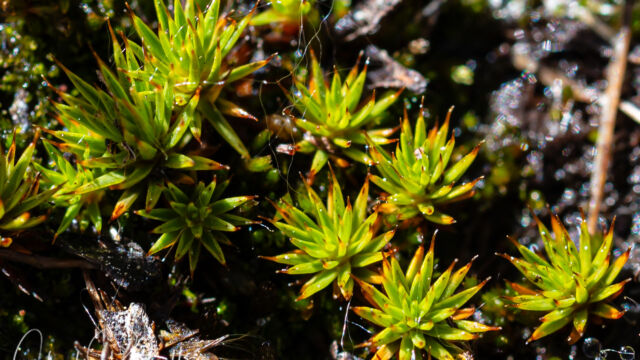


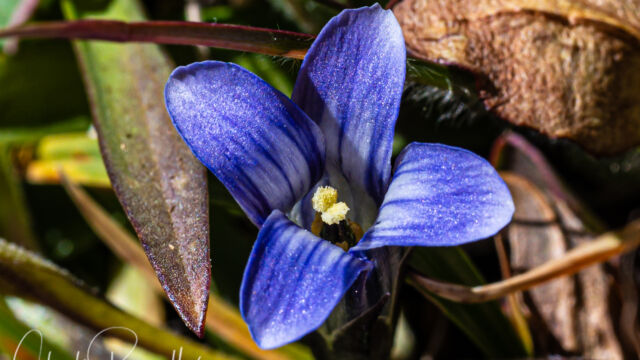
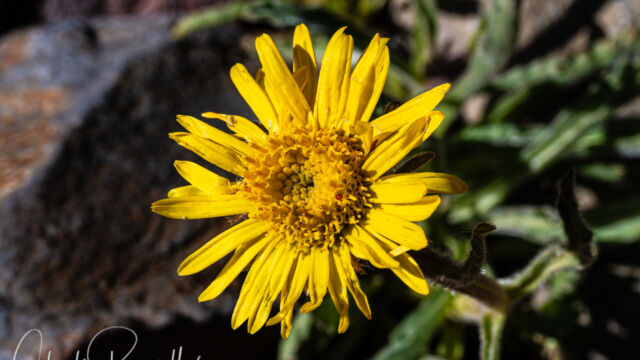
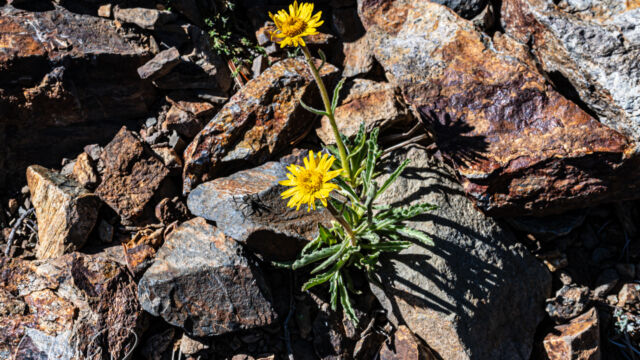

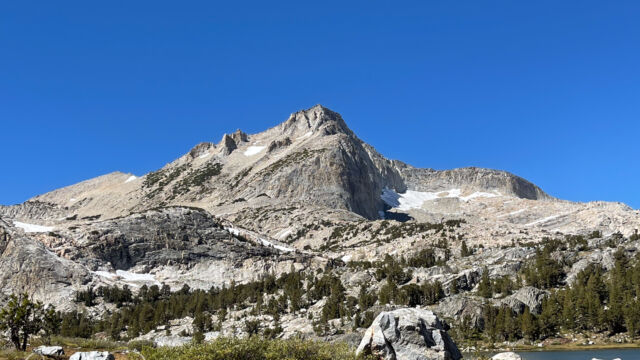
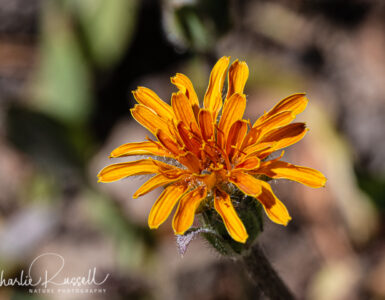
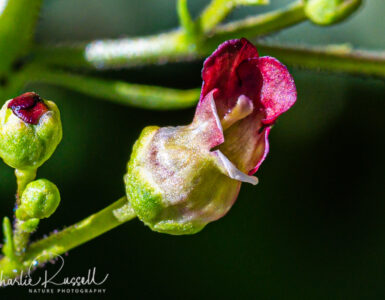
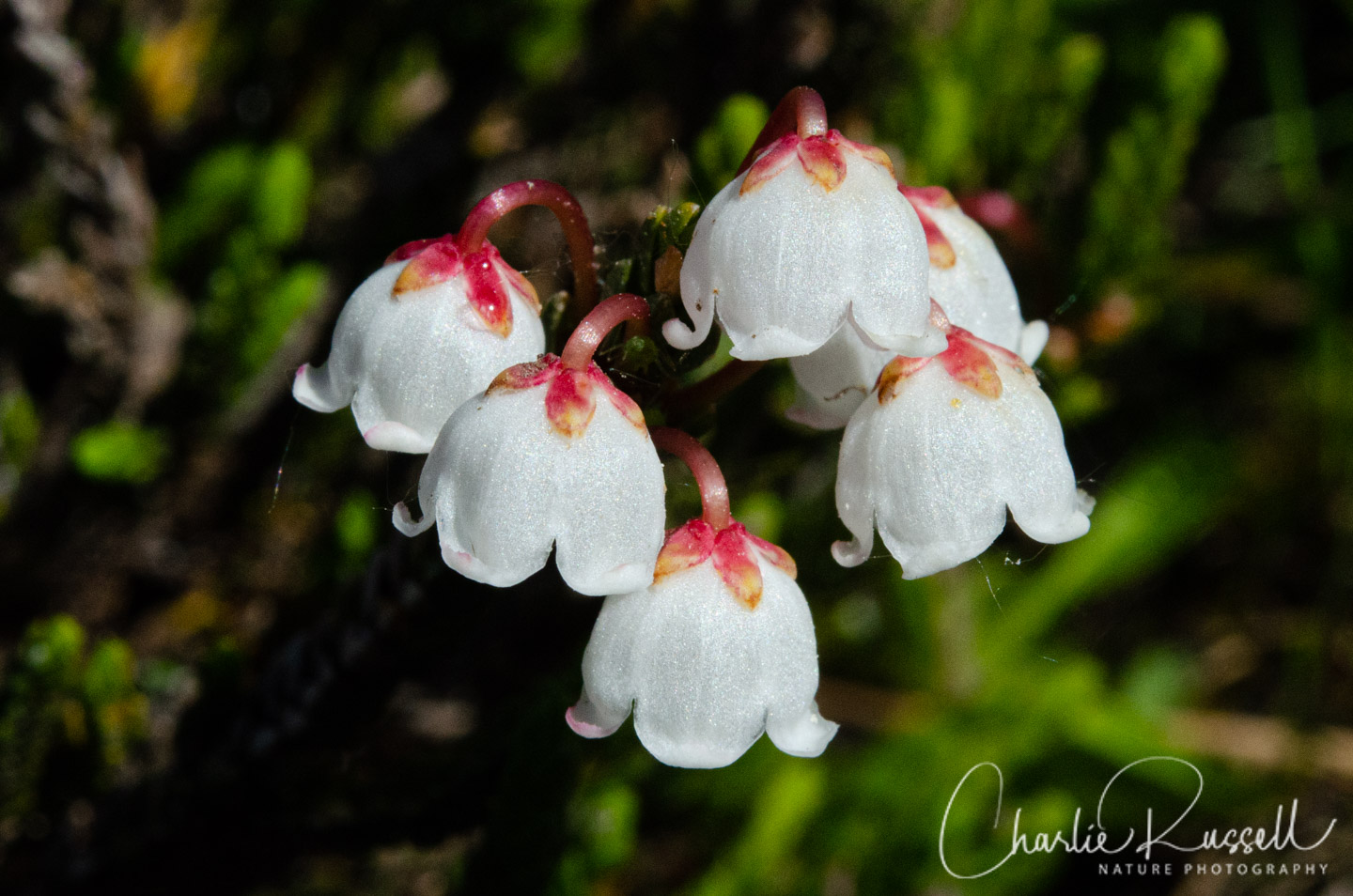
When you have more time, and especially during late spring – summer, a visit to the 20 Lakes Basin would be a treat – the lakes are like jewels and easy to get to. There once was a water-taxi that went across the lake from the south side, saving a bit of walking to get there.
The lodge that ran the water taxi has been closed for awhile, so there was no water taxi for 2023 at least. I’m not sure when/if they plan on opening. My main issue is age, and we weren’t acclimated to the altitude. I’d love to get out to the basin, if the water taxi starts running again.